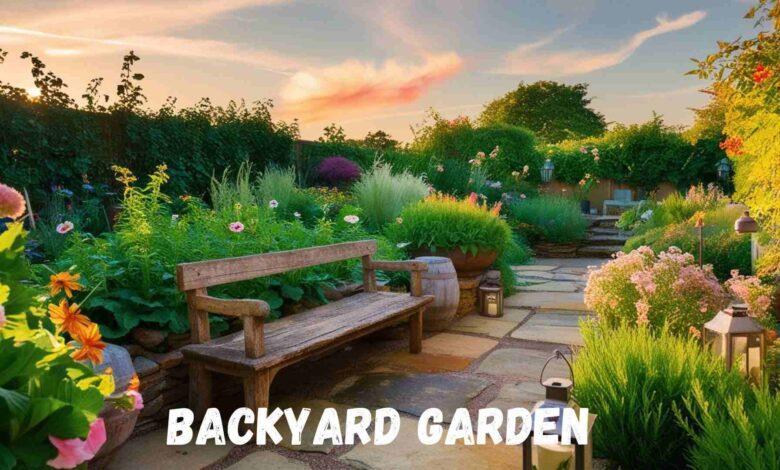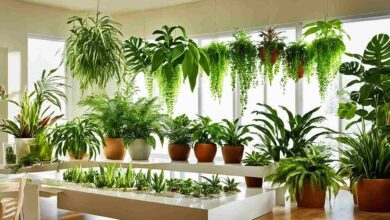How to Start a Backyard Garden: 10 Steps for Beginner Gardeners
Essential Guide: 10 Steps to Kickstart Your Backyard Garden

Gardening is more than just a hobby; it’s a chance to connect with nature, enhance your outdoor space, and even enjoy homegrown produce. Starting a backyard garden might seem daunting, especially if you’re a beginner, but it’s a rewarding process that offers a variety of benefits, from fresh vegetables to a beautiful flower bed. A garden doesn’t require an elaborate setup to get started. All you need is some preparation.
1. Choose the Right Location
The location of your garden is crucial. Most plants need at least six to eight hours of sunlight each day Sunlight exposure isn’t the only factor, though. Accessibility is also important—choose a spot that’s easy to reach so you’ll be encouraged to maintain it. Also, if possible, pick a location close to a water source for easier watering, especially during the hot summer months.
2. Plan the Garden Layout
Once you’ve selected a location, think about the layout of your garden. Consider factors like plant spacing, bed shapes, and accessibility for watering and weeding. You might want to create designated rows, raised beds, or even container gardens if you’re limited in space.
Raised beds are a popular choice for backyard gardens. They offer better control over soil quality, improve drainage, and make planting and harvesting easier. However, traditional in-ground gardens can work just as well and are more budget-friendly. Whichever layout you choose, ensure that plants are spaced appropriately according to their growth requirements. Overcrowded plants can lead to disease and competition for nutrients.
3. Prepare the Soil
Good soil is the foundation of a healthy garden. Most backyard soil can be improved by adding organic matter, such as compost, which helps create a nutrient-rich environment for plants. Start by loosening the soil with a shovel or garden fork, breaking up any clumps, and removing rocks, weeds, and debris. Mixing in compost or aged manure will improve the soil’s structure, allowing it to retain moisture while draining excess water.
You can test your soil’s pH to see if it’s suitable for the plants you intend to grow. While most vegetables and flowers prefer slightly acidic to neutral soil (a pH of 6.0-7.0), other plants like blueberries need more acidic conditions. If your soil is too acidic or alkaline, you can amend it with additives to bring it closer to the ideal range for your plants.
5. Select Plants That Follow Your Climate and Space
Choosing the right plants is key to a successful backyard garden. Your local climate will play a big role in determining what types of plants will thrive. Some plants, like tomatoes and basil, prefer warmer climates, while others, like spinach and carrots, are more tolerant of cooler temperatures. Research which plants grow well in your area and take note of their specific needs for sunlight, water, and spacing.
6. Get the Right Tools
Having the right tools can make gardening much easier. Basic gardening tools include a show As you gain experience, you might find that certain tools become essential for spec.
7. Plant with Care
Each type of plant has unique requirements Start by placing the seeds or seedlings in the soil, covering them.
8. Water Wisely
Watering is a critical aspect of garden maintenance, especially for young plants that need consistent moisture. Water your garden early in the day to reduce evaporation and allow plants to absorb moisture before the hour.
For most gardens, deep, infrequent watering is better than light, frequent watering. Deep watering encourages plants to develop stronger root systems, making.
9. Mulch to Retain Moisture and Suppress Weeds
Mulching is one of the best ways to reduce weeds, retain soil moisture, and improve the soil’s quality over time. Organic mulch, such as straw, wood chips, or compost, breaks down and adds nutrients to the s Apply a 2-3 inch layer of mulch around your plants, but avoid pil.
10. Practice Regular Maintenance
Maintaining a garden requires regular attention. Tasks like weeding, pruning, and monitoring for pests and diseases will keep your garden healthy and productive Inspect your plants regularly for signs of pests.
11. Harvest and Enjoy Your Hard Work
One of the most rewarding parts of g Flowers like zinnias, cosmos, and marigolds can be cut for bouquets, often encouraging even.
Conclusion
Starting a backyard garden is a fulfilling endeavor that connects you with nature, improves your outdoor space, and allows you to enjoy fresh produce or beautiful flowers. By planning your layout, choosing the right plants, preparing the soil, and maintaining your garden, you’ll soon cultivate a thriving green space. Gardening may require patience and regular care, but the rewards are worth the effort. As you gain confidence and experience, you may find yourself expanding your garden, exploring new plant varieties, and deepening your connection to the natural world. Enjoy the journey and the many benefits.

